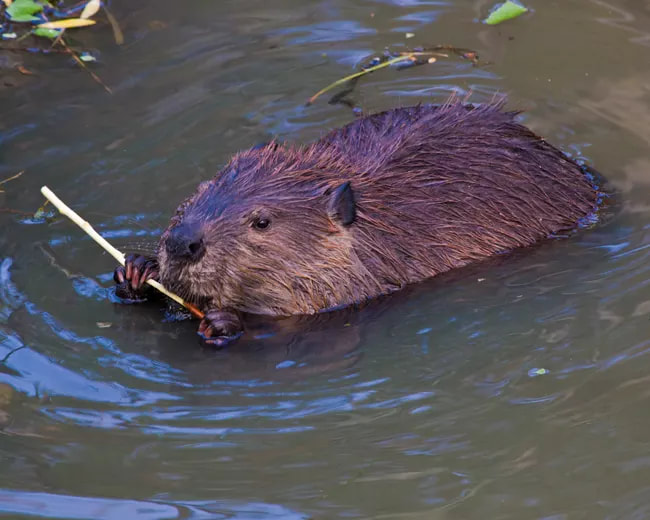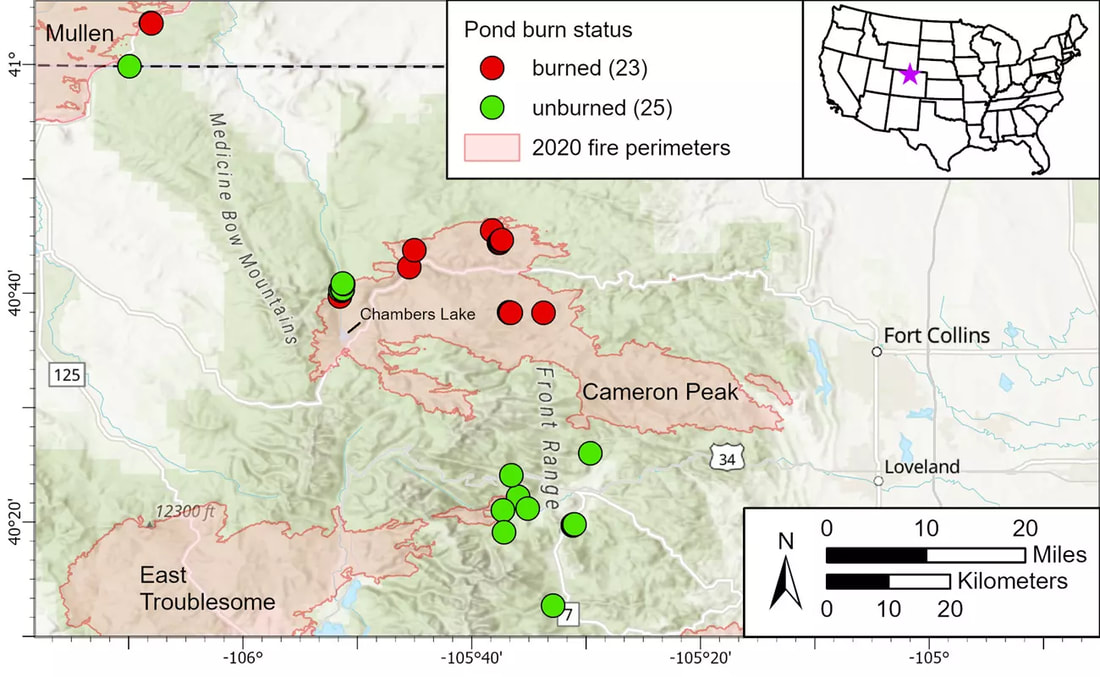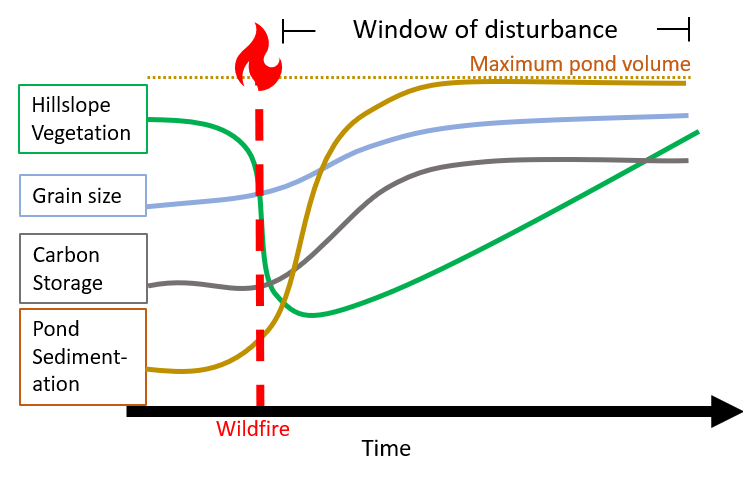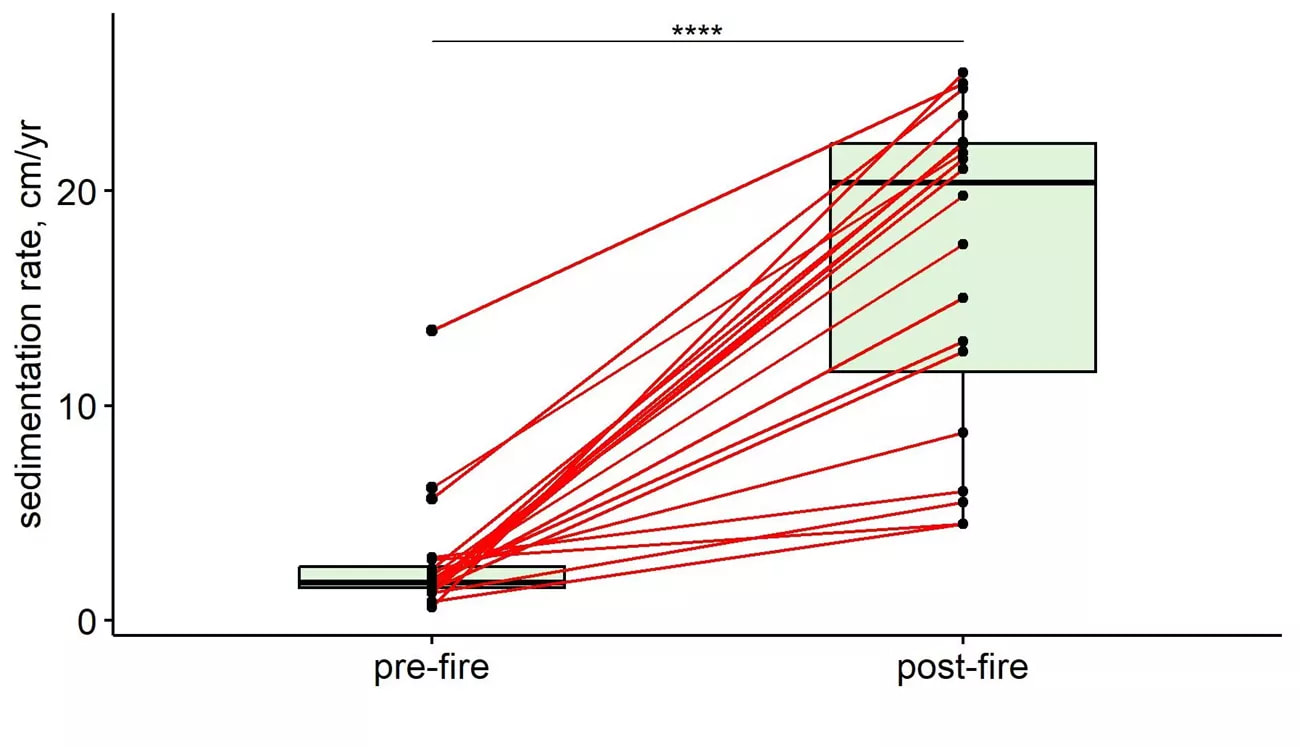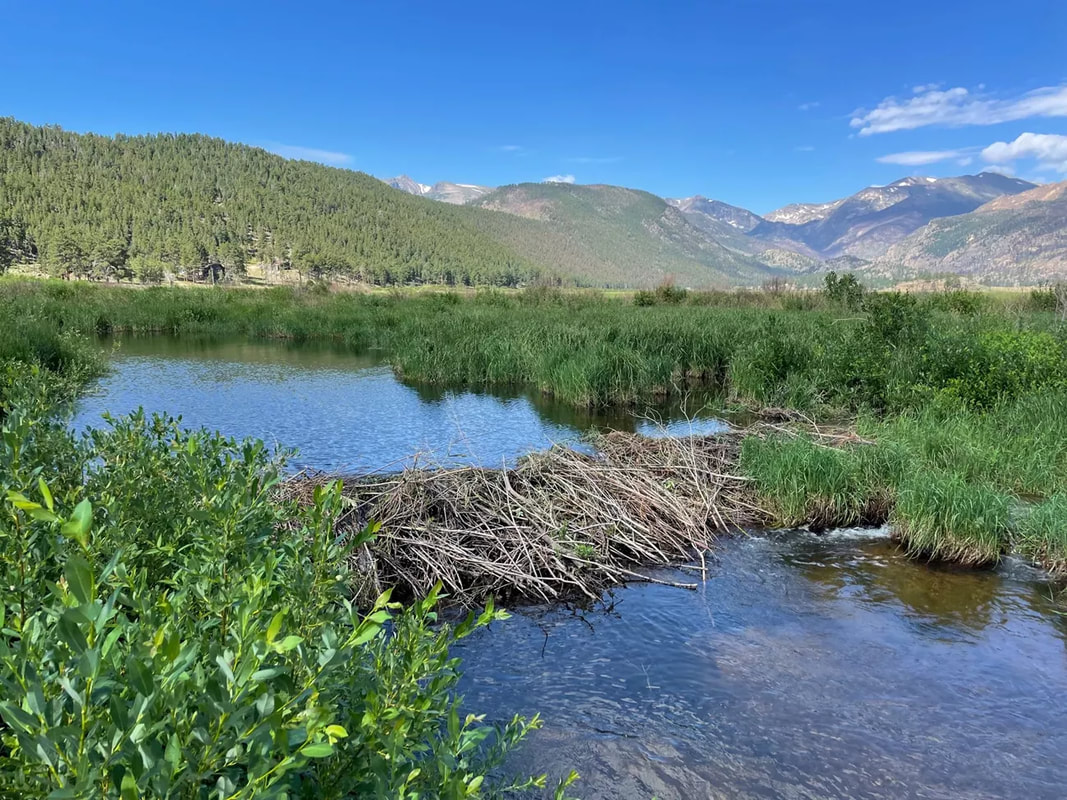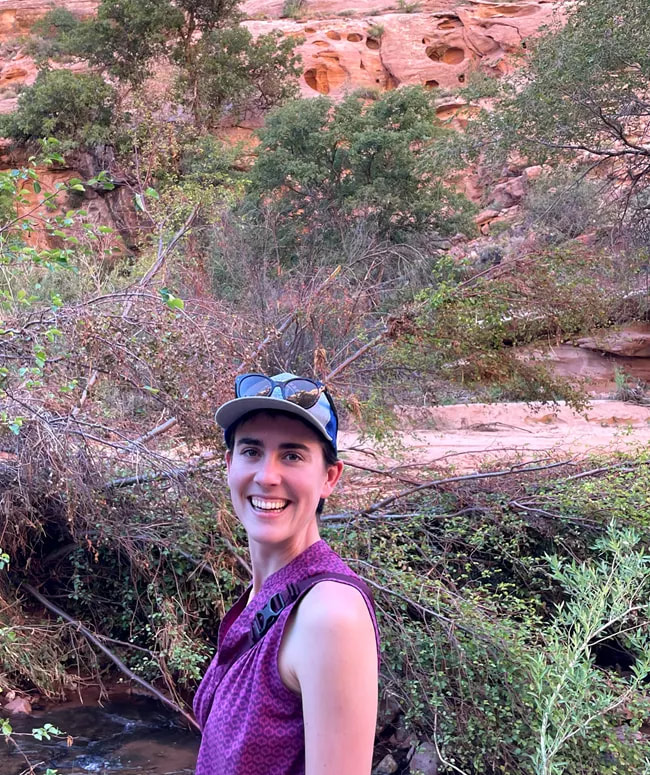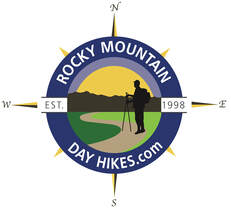|
Notes from the
Trail |
Beaver Ponds: How do Post-Fire Sediment and Carbon Dynamics Contribute to Watershed Resilience?9/26/2024 This article is republished from Continental Divide Research Learning Center Beavers are an important part of river systems and are often referred to as ecosystem engineers. They construct dams using riverside vegetation that pool water on the upstream portion of the river. The dams also slow the water flow. The combined effect of pooling and slowing water allows sediment to settle upstream of the beaver dam, a process that naturally improves water quality.
The retention of sediment and carbon by beaver dams can dampen potential impacts to drinking water and aquatic habitat. Immediately following a fire is the time when the most sediment enters rivers and creeks. Knowing that the sediments would travel down towards the river valleys, Sarah Dunn - a graduate student at Colorado State University - decided to study the impacts of the fires on the sediment retention in beaver ponds within and outside of burned areas to understand whether beaver ponds impact the ability of a watershed to recover after disturbance such as fire (Figure 1). The ability of a watershed to recover after a disturbance is known as watershed resilience. Research Study To determine how beaver ponds affect the resilience of watersheds, Dunn set out to perform a research project to answer the following three questions: Do burned ponds store greater relative volumes of sediment compared to unburned ponds?, Do post-fire sedimentation rates in burned ponds exceed pre-fire and unburned sedimentation rates?, and Is post-fire sediment stored in beaver ponds coarser and have a higher abundance of organic carbon relative to pre-fire sediment? The rate and volume of sediment, carbon storage, and sediment grain size are expected to increase after a fire during the period when vegetation is recovering (Figure 2). Dunn used field, laboratory, and geospatial methods to answer these questions. During the field component of the project, 48 beaver ponds were surveyed. Ponds were located in both burned and unburned areas. In the field, surveys were conducted of the pond perimeters and sediment and water depths within the ponds. Dunn also collected sediment cores to identify charcoal within the layers of sediment that had been deposited. Laboratory analysis included measuring of total organic carbon and grain size of the pond sediment. Lastly, geospatial analysis was performed on the field and laboratory data. Results For the beaver ponds that were sampled and analyzed for this research project, about half were located within a burned area and the other half located in an unburned area. The average sediment volume stored in the ponds was 796 m3 and sediment volumes ranged from 4 m3 (about half a dump truck load) to 7,888 m3 (about 500 dump trucks worth). Sarah determined that burned area beaver ponds stored higher relative volumes of sediment. The sedimentation rates after fires were significantly different from sedimentation rates before the fire (Figure 3). In fact, the sedimentation rates in ponds post-fire were an order of magnitude higher than pre-fire rates in ponds. In analyzing the grain size of sediments in burned and unburned beaver ponds, Sarah found that the grain size and amount of organic carbon did not differ significantly. Applications in the NPS Beaver ponds, which once were abundant on the RMNP landscape and are now less common, drastically changing the hydrology of the environment. Beaver dams (Figure 4) create upstream ponds that store sediment and carbon. Due to the effects, mimicking beaver dams with structures is a strategy under consideration for fire-prone areas. The research that Sarah conducted provides evidence that beaver ponds effectively trap and retain post-fire sediment. The increased sediment in beaver ponds post-fire builds on the existing knowledge that beaver ponds provide to the ecosystem is evident through the increase of pooling water and decreased water flow (Figure 4). These findings contribute to the park’s efforts to restore beaver habitat.
0 Comments
Leave a Reply. |
"The wild requires that we learn the terrain, nod to all the plants and animals and birds, ford the streams and cross the ridges, and tell a good story when we get back home." ~ Gary Snyder
Categories
All
“Hiking -I don’t like either the word or the thing. People ought to saunter in the mountains - not hike! Do you know the origin of the word ‘saunter?’ It’s a beautiful word. Away back in the Middle Ages people used to go on pilgrimages to the Holy Land, and when people in the villages through which they passed asked where they were going, they would reply, A la sainte terre,’ ‘To the Holy Land.’ And so they became known as sainte-terre-ers or saunterers. Now these mountains are our Holy Land, and we ought to saunter through them reverently, not ‘hike’ through them.” ~ John Muir |
© Copyright 2025 Barefoot Publications, All Rights Reserved

